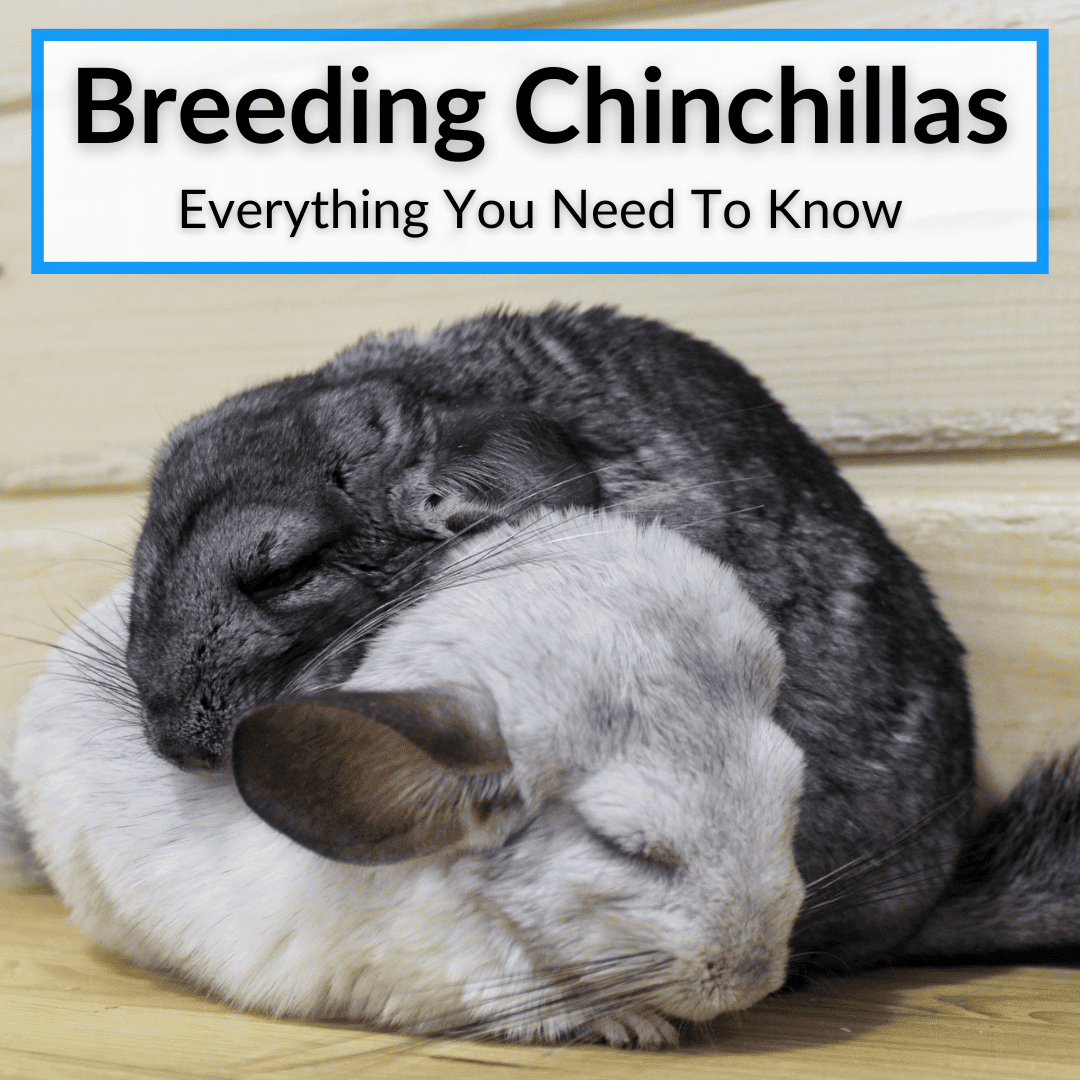
But only if you know what you are doing.
It takes the right knowledge and some planning.
I will help you with both of those in this brief step-by-step guide on how to breed chinchillas.
It does not take much to get started, if you are just breeding a single pair.
But if you want to make money mating chinchillas, you’ll need quite a bit more.
It only becomes profitable at scale.
There is a section on breeding and raising chinchillas for money toward the bottom of this page. First, let’s find out exactly what you need to do to mate a single pair of chinchillas.
Contents
- 1 How To Breed Chinchillas: Step-By-Step Guide
- 2 Are Chinchillas Easy To Breed?
- 3 How Often Do Chinchillas Breed?
- 4 Can Chinchilla Siblings Mate?
- 5 Mating Chinchillas For A Living
- 6 Breeding Chinchillas: Final Thoughts
How To Breed Chinchillas: Step-By-Step Guide
Breeding chinchillas requires careful planning and know-how. Start by ensuring that the chinchilla pair is healthy and of the right age for breeding.
Introduce the male and female gradually in a comfortable enclosure. Monitor the breeding and, once mating occurs, separate the two. A pregnant chinchilla will give birth after 100 to 115 days.
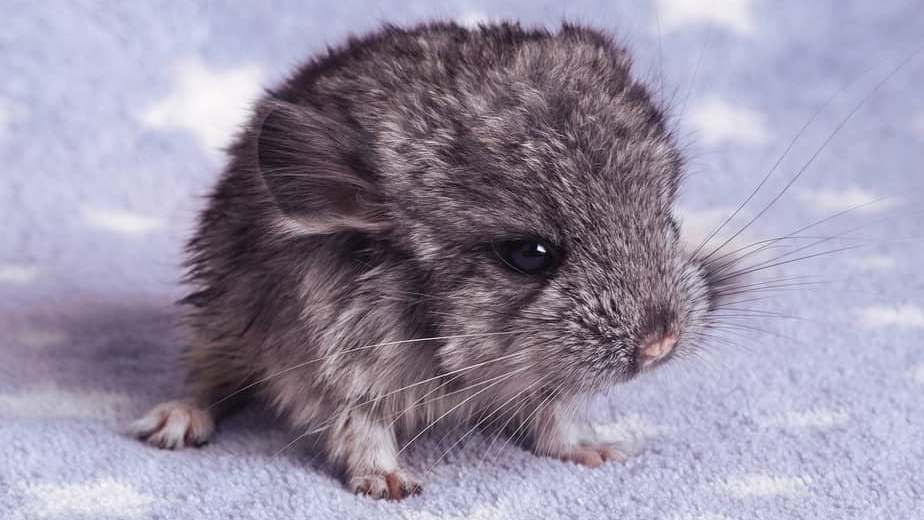
Sound simple? It is, essentially. But there is obviously a bit more to chinchilla reproduction. Breeding chinchillas requires several steps and careful planning, so let’s get into the details.
Do Your Homework
If this is the first time you are breeding chinchillas, please do your research. It goes without saying, you should know all about caring for a chinchilla.
But you also need to learn all about chinchilla breeding and pregnancy, plus how to care for chinchilla babies. This includes simple things like the fact that chinchillas do not get periods, to more complex breeding topics, like breeding runs.
If possible, talk to an exotic vet or chinchilla breeder. Get an understanding of chinchilla genetics and chinchilla health issues to breed for the best temperament and traits.
Always use high-quality breeding stock to ensure healthy offspring. It is also important to consider the question of age.
How old do chinchillas have to be to breed?
Male chinchillas attain sexual maturity at 7 to 8 months of age, whereas you can breed female chinchillas at around 4 to 5 months. But just because you can, does not mean you should. It is important to hold off mating the female until she is at least one year old, for health reasons.
Get The Pair Health Tested
Get your male and female chinchillas examined by a vet specializing in small animals. Ensure they are in good health. More importantly, they should be compatible temperament-wise. You certainly do not want them to fight.
Introduce The Pair Gradually
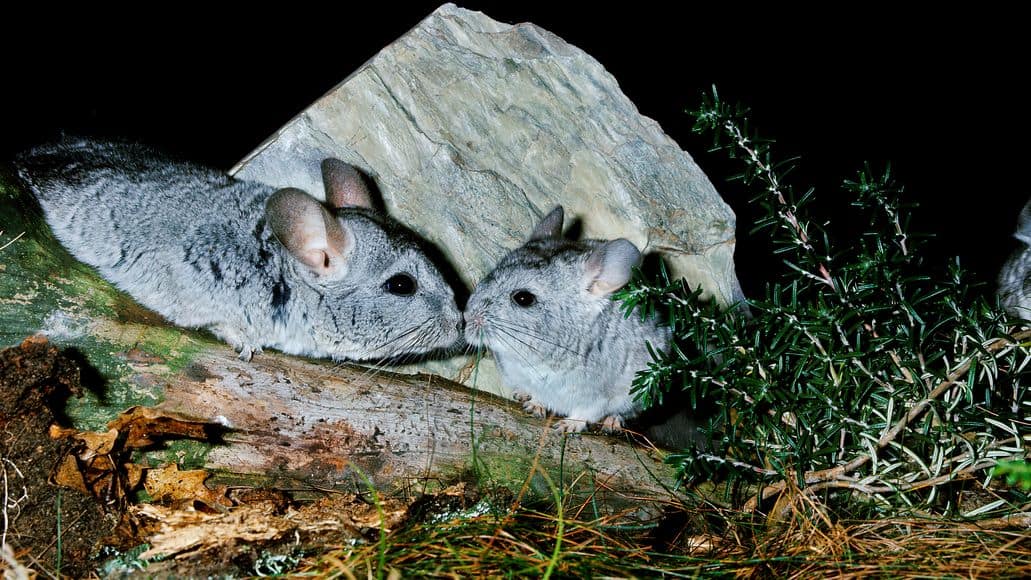
Introduce your breeding pair gradually by placing their cages side by side. Once there are no signs of aggression, you can transfer the pair into a larger cage together. These cages are the best options.
Make sure to supervise the interaction continuously. If there is aggression or bullying, separate the pair and retry after a few days. Bonding chinchillas can take some time.
Provide An Optimal Breeding Environment
Provide a spacious cage or enclosure for your pair. It should have plenty of hiding areas, nesting boxes, and comfortable bedding. Chinchillas breed successfully at temperatures between 58° and 63° F. Try to keep the room temperature under 70° F.
You can run a fan if the room temperature is a bit high. The fan also helps block outside sounds, giving your pets a little privacy. Light music works well or this, too.
Monitor The Mating
Chinchillas mate several times for brief sessions. You can monitor the process, but be careful not to disturb the pair. Do not be alarmed if the female loses some hair during mating.
Chinchilla mating can be quite violent and aggressive since the males tend to pull the females’ hair. Females also show some initial resistance before mating. They might whine or growl loudly.
Some females tend to get very aggressive with the males, which is why you must provide plenty of nesting areas and hideouts for the male to escape.
After mating, the female develops a copulation plug. This is a waxy substance with a cornified layer along the vaginal wall. She will excrete this plug after breeding.
Similarly, male chinchillas may develop a hair ring around their penile sheath. You will need to cut this away with scissors. You can also apply some petroleum jelly to the sheath.
Separate The Pair After Mating
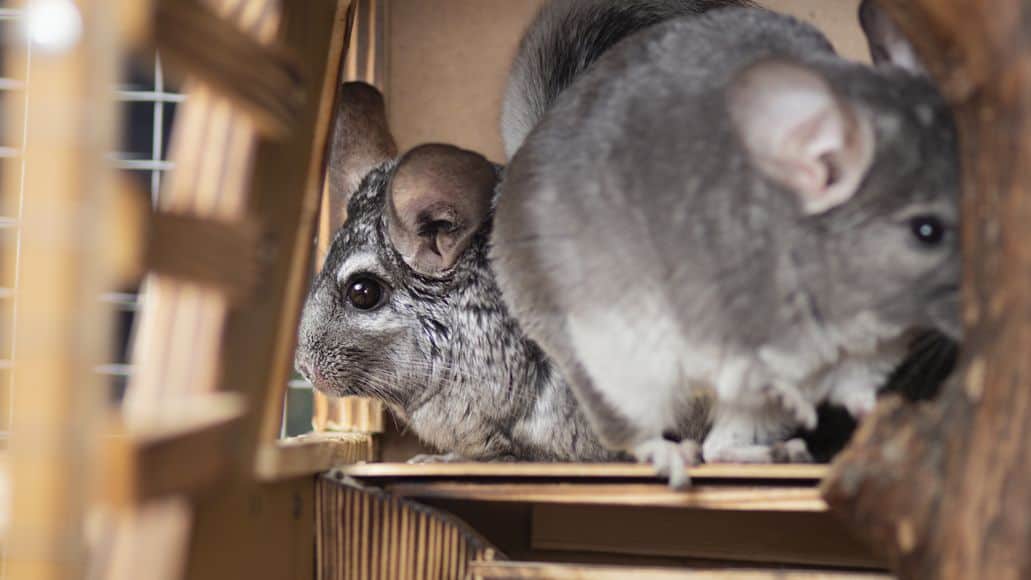
After the pair has mated several times, you must separate them. This is important to ensure that the female does not show aggression toward the male after the kits arrive.
Take Care Of The Pregnant Chinchilla
Your pregnant female chinchilla will show several behavioral changes. She will start gathering nesting material for the kits.
A chinchilla pregnancy will typically last around 100 to 115 days. At the end of the pregnancy, she will sleep, eat, and drink more than usual. She will also appear heavier and may develop pink teats.
You must carefully monitor your chinchilla’s weight and have her examined by a vet from time to time, to ensure optimum growth.
Prepare For The Arrival Of The Kits
Once your chinchilla gives birth, make sure to provide an optimal environment for the mother and kits for the whole time the kits stay with the mother.
This includes a steady temperature, ventilation, and a supply of fresh hay and pellets. Monitor the kits to ensure they are nursing properly. You should also determine the gender of the baby chinchillas.
Are Chinchillas Easy To Breed?
Chinchillas are relatively easy to breed. However, you must pay attention to the health, temperament, and genetics of the breeding pair.
You must also ensure compatibility in terms of the ages of the male and female chinchillas. Note that some chinchillas can be infertile and may have difficulty conceiving.
If the female fails to conceive after several attempts, please have the pair examined by a veterinarian to determine the cause of infertility.
If mating is successful, you need to provide appropriate housing and veterinary attention for the dam’s and kits’ health and well-being. Learn how to care for baby chinchillas here.
After the kits are older, you must provide early enrichment, socialization, and handling and also find responsible owners for them.
How Often Do Chinchillas Breed?
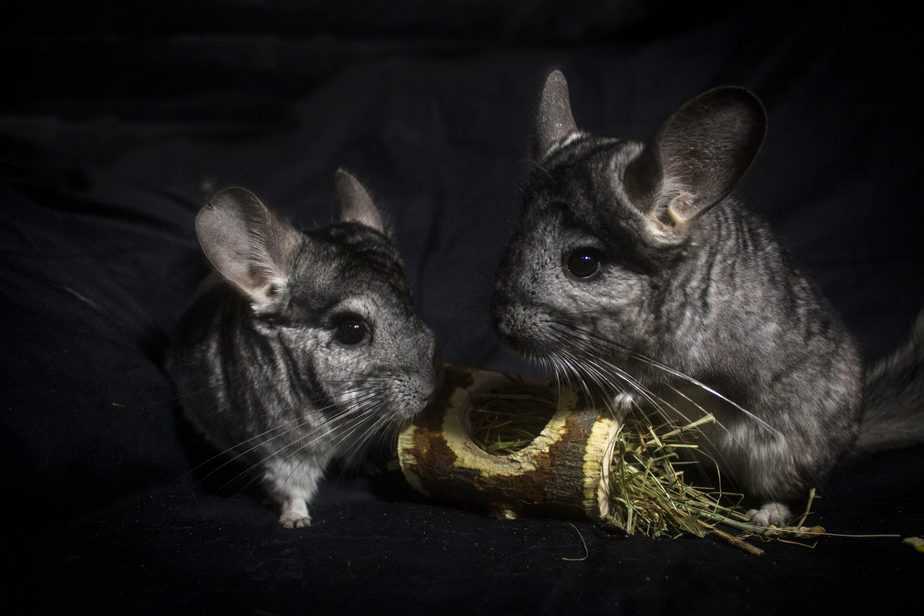
Chinchillas can have 1 to 3 litters per year (with one to four kits in each litter). That means you can mate female chinchillas up to three times each year. You can breed them for up to 10 years of their lives.
Can Chinchilla Siblings Mate?
Yes, you can mate chinchilla siblings, but please do not. Such inbreeding could result in various health issues in the kits. The offspring could be deformed or end up with cognitive issues.
This is why good breeders immediately separate kits (and parents) of the opposite genders as early as 8 to 10 weeks. They want to make sure they do not mate with each other.
Mating Chinchillas For A Living
Are you considering becoming a chinchilla breeder for profit? Here are a few questions you will most likely have.
How Do You Become A Chinchilla Breeder?
Becoming a chinchilla breeder can be a rewarding process. Here are some steps you need to take to make breeding chinchillas a lucrative business.
- Research: Learn all that you can about chinchilla breeding. Meet several breeders and talk to them. If possible, visit them in person to see their setup. Read up on everything you can find about chinchillas. Stay up to date with current breeding best practices by speaking with vets, and breeders, and asking questions on online chinchilla forums and communities.
- Get hands-on experience: If possible, observe the breeding cycle of chinchillas by visiting breeders or volunteering at small animal rescue organizations. This will help you gain an insight into what is needed for the breeding
- Look for a quality stock: Your starting chinchilla pair needs to be healthy and of sound temperament. It should also be compatible in terms of genetics and not have any health issues.
- Invest in a proper setup: Invest in spacious cages, climate control, bedding, ventilation, premium food, etc.
Can You Make Money Raising Chinchillas?
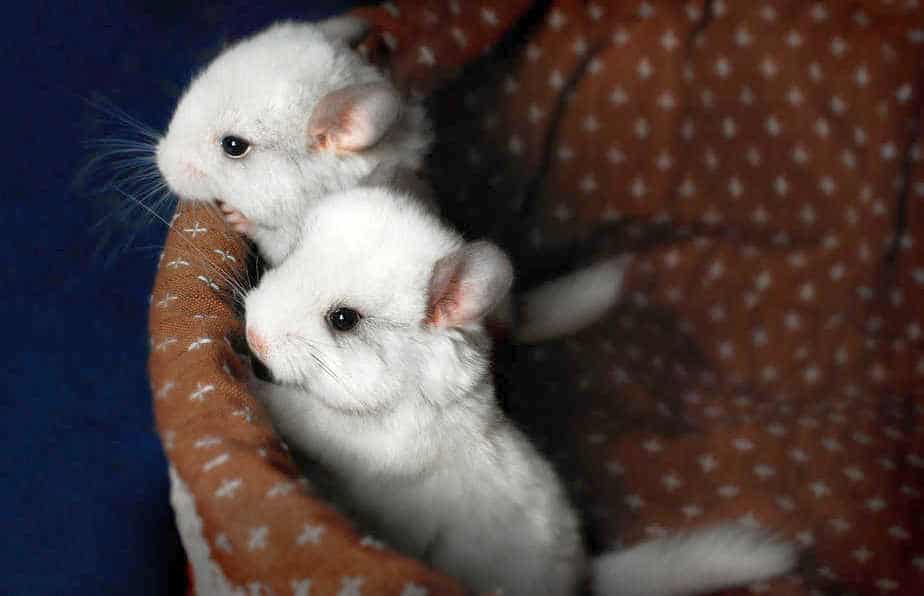
Small-scale hobby chinchilla breeders do not make much profit in this business. At the most, one can break even in terms of the initial setup and investment costs.
For a profitable chinchilla breeding venture, you might want to breed on a much larger scale. This involves keeping more than 100 to 1000 chinchillas!
If you’re breeding for a hobby, you need all the things listed above in terms of cage setup, etc. If you want to breed for profit, you will need to do everything on a much larger scale. Honestly though, this is not something you should get into if you only care about profit.
How Much Money Do Chinchilla Breeders Make?
Most chinchilla breeders sell their chinchilla kits for $40 to $100 per kit, depending on the pet’s bloodlines, temperament, color, etc. This can fetch you a decent amount of money, if you sell a lot of them.
However, if you are just starting with chinchilla breeding on a small scale, you might not make much money, at least in the beginning. You might, at the most, break even with the investment you make for the setup.
Is It Legal To Breed Chinchillas?
Yes, it is legal to breed chinchillas, especially for small-scale or hobby breeding. The USDA or other organizations do not regulate this industry.
However, you must still follow the code of conduct that chinchilla breeders have, and only engage in ethical breeding practices.
Do You Need A License To Breed Chinchillas?
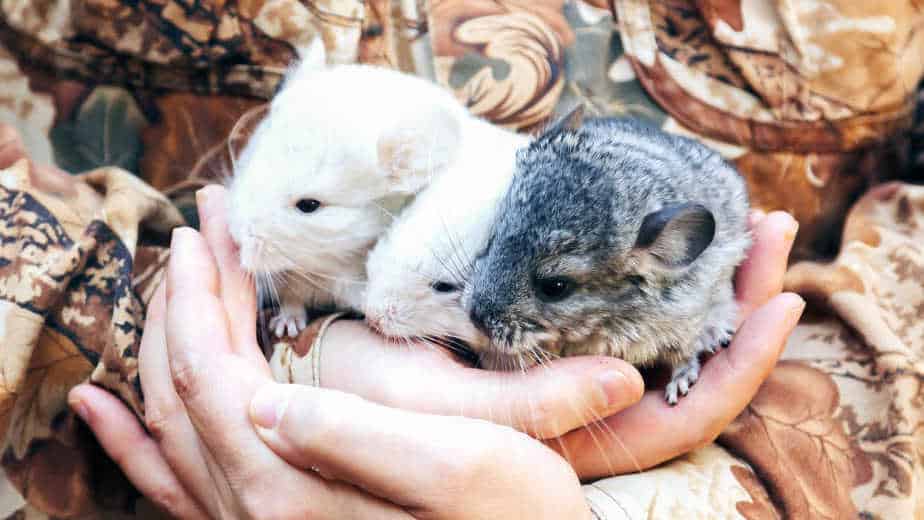
No, you do not need a license from the USDA to breed chinchillas. There are no government regulations or restrictions on starting this business, so anyone can become a chinchilla breeder.
Breeding Chinchillas: Final Thoughts
See? Breeding chinchillas is not all that difficult. You just need to make sure you find a compatible pair and provide them everything they need. That does take a bit of preparation and some time.
However, if you want to make money raising chinchillas, you will need to breed a lot of them. This requires much more in the way of equipment (mainly a lot of cages and accessories). It is a big undertaking, so make sure it is really something you want to get into and dedicate your life to.
Matt says
This is a load of crap. I have disseminated the invalidity of the information provided on this website to the largest Facebook group and to the breeding organizations. I am working on getting your site marked as possibly dangerous with the search engines as well.
You mention nothing about the lethal factor in breeding. You are incorrectly telling this information that makes it seem you slowly introduce a pair in a large cage and this is incorrect, most of us breeders use a Run which you mention nothing about. We do it for the safety of the mother and kit and to provide a safe environment. All you mention is how to make money and all about money. Temperament is only part of what we look for to improve the genetics of the animal. We also look at size, color clarity , fur density size and other things. A vet is not an expert on any of this as most had a single class that groups all exotic animals into one group and generalized most of it.
Take this incorrect information down, fix what you are saying and give factual, correct information. I am sure you are not going to post this comment of you blog here but I will ensure people known